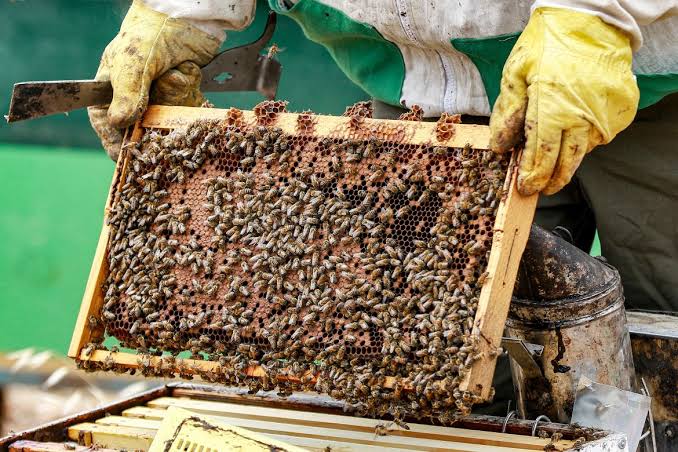The Oyam District production department has released statistics on the Apiculture value chain, showing that 16,355 kilograms of honey and 776 kilograms of beeswax were produced in the district last year.
According to the statistics, Minakulu Sub-county led in the production of both honey and beeswax, producing 2,500 kg of honey and 125 kg of beeswax.
Other leading sub-counties and town councils in honey and beeswax production include:
- Loro Sub-county: 2,250 kg of honey, 112 kg of beeswax
- Minakulu Town Council: 2,000 kg of honey, 100 kg of beeswax
- Myene Sub-county: 1,750 kg of honey, 87 kg of beeswax
- Aber Sub-county: 1,500 kg of honey, 75 kg of beeswax
- Kamdini Sub-county: 1,250 kg of honey, 62 kg of beeswax
- Abok Sub-county: 1,000 kg of honey, 50 kg of beeswax
- Ngai Sub-county: 750 kg of honey, 37 kg of beeswax
- Acaba Sub-county: 500 kg of honey, 25 kg of beeswax
- Otwal Sub-county: 450 kg of honey, 22 kg of beeswax
- Loro Town Council: 400 kg of honey, 20 kg of beeswax
- Iceme Sub-county: 350 kg of honey, 17 kg of beeswax
- Kamdini Town Council: 300 kg of honey, 15 kg of beeswax
- Iceme Town Council: 250 kg of honey, 12 kg of beeswax
- Oyam Town Council: 200 kg of honey, 10 kg of beeswax
- Aleka Sub-county: 150 kg of honey, 7 kg of beeswax
Albino Cox Ogwal, the District Production Officer of Oyam District, says the statistics indicate that farmers are increasingly embracing beekeeping as a source of economic livelihood, which is also environmentally friendly and has no negative impact on the environment.
In Oyam District, beekeepers are using both local beehives and the Kenya Top Bar (KTB) hive, a modern beehive that can accommodate large numbers of bee swarms.




















